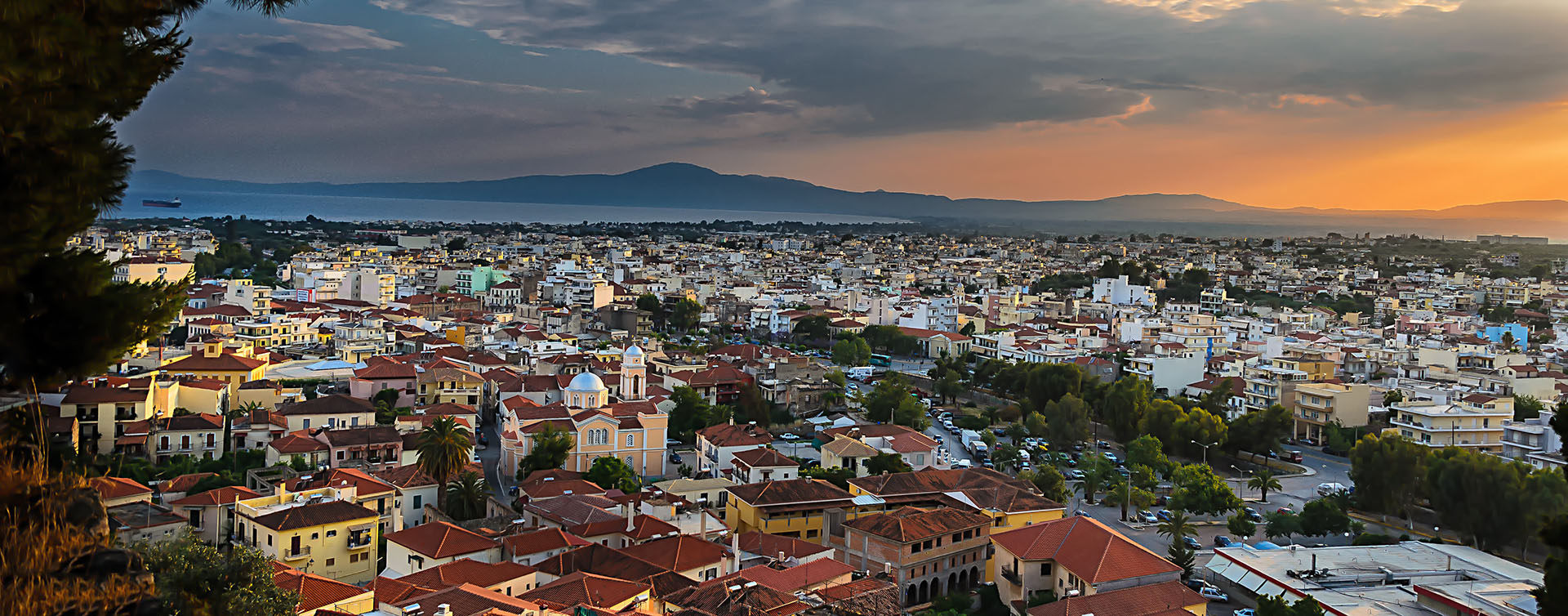The natural beauty of Messinia with the indented shores, sandy beaches, forested mountains and fertile valleys, coexists with significant archaeological monuments. Kalamata, the capital and central port of Messinia, is situated at the site of ancient Farai. Following independence from the Turks and thanks to the exploitation of the fertile Messinian lands (producing olive oil, raisins, figs etc), it developed into a wealthy urban centre and a significant port. It is located 238 km SW of Athens.
Walking around
The point of reference par excellence in the city of Kalamata is the legendary “castle of Isabeau” where the renowned International Dance Festival takes place annually. It is amphitheatrically constructed on the site of the Farai acropolis offering a bird’s eye view of the city. Constructed in the 13th century by William Villehardouin, it underwent subsequent additions and conversions by the Venetians and the Turks. Nowadays, it is an ideal open air venue for theatre, music and dance shows.
No less beautiful is the exquisite Palia Poli (Old City) at the foot of the Castle. The wider region boasts the Metropolitan Panagia Ipapanti church (1873), the patron saint of Kalamata celebrated on February 2nd, the 12th century Kalograion Monastery with the renowned silk weaving workshop, and the Byzantine church Agioi Apostoloi (13th century) with the brick enclosed masonry. The area is the hotspot for the city’s youth, for it is the beating heart of the nightlife in Kalamata and by no means will it be still!
Must-see attractions
- The City Hall.
- The Modern Greek Art Gallery, with paintings, sculptures and carvings.
- The Benakeion Archaeological Museum (housed in the neoclassical building of the old Municipal agora) with findings dating from the Bronze Age to the Roman period.
- The spacious central Vassileos Georgiou (King George) square with many coffee shops, meeting places and strolling venues for residents and visitors. The pedestrian walkway of Aristomenous Street starts here with many stores and coffee shops to populate it.
- To the west of the square the neighbourhood unfolds around the picturesque railroad station with a network of pedestrian ways, small coffee shops, bars and tavernas.
- The Folklore and History Museum, which is housed in the Kiriakou mansion, with traditional objects and relics from the 1821 Greek War of Independence.
- The Municipal theatre.
- The Railways Park with exhibits of old motorcycles and railway wagons.
- The seaside road in front of the city’s extensive beach (4 km length with marvellous waters). On the seaside of Kalamata, people can swim in crystal clear waters and enjoy lace-like beaches, which have been granted the Blue Flag award of quality. Along the seaside, there are several tavernas, ouzo restaurants, cafeterias, bars, clubs, whereas beach aficionados can enjoy all kinds of water sports.
- The western beach with the city’s marina connected to the city centre via a cycle lane too.
Near-by destinations
- The beaches at Verga (8 km E), Mikri Mandineia (10 km SE), Avia (12 km SE) and Kitries (17 km SE), which in recent years have developed into resorts with significant tourist facilities and a vibrant nightlife in the summer.
- The small town of Messini (11 km NW) with the Byzantine church of Agios Dimitrios, the prominent Municipal Mansion (1870) and the Τ. Katsoulidis – Museum of Carvings.
- The mountain villages on the Western slope of Mt.Taygetos, on the road to the city from Sparta, which is one of the most beautiful roads in Greece.
Events
- The revival of the impressive “saitopolemos” (dart-war) custom at Easter, on the eve of the Resurrection (Western Beach Kalamata – Old Abattoirs).
- Cultural events, theatrical performances and concerts at the Castle amphitheatre during summer.
- The Carnival events with the traditional “gaitanaki” (maypole dance) in the city’s central square.
- The International Dance Festival in summer (www.kalamatadancefestival.gr).
- The International Documentary Festival.
- The major carnival in Messini on the last Sunday of the Carnival (Apokries) with the customary happenings culminating in “the hanging of the old lady” on Ash Monday.
- The horse racing events at the town of Plati (16 km NW) on Easter Monday.

